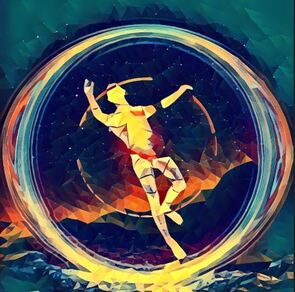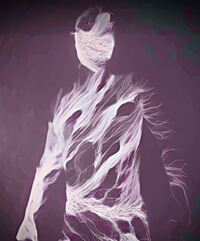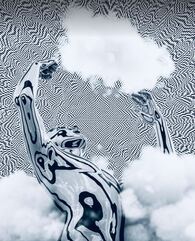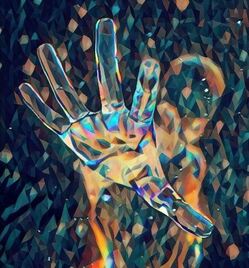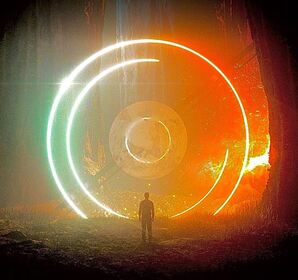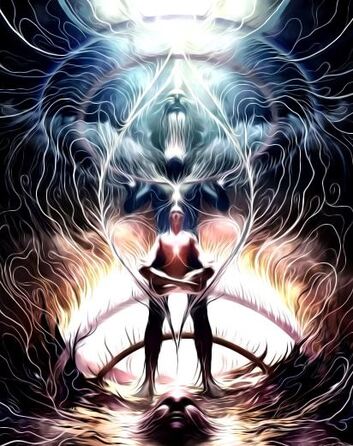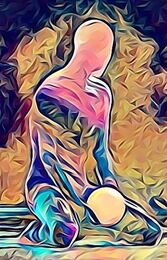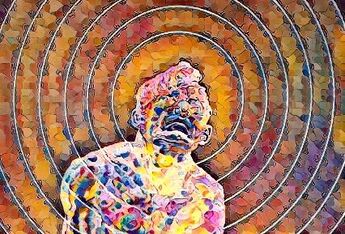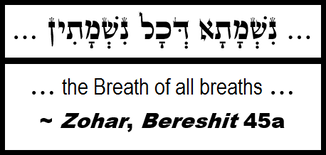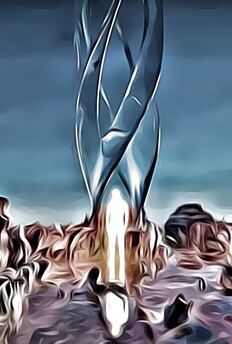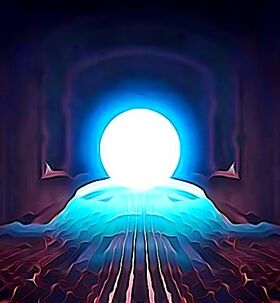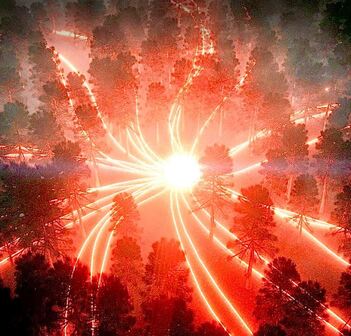IN HIS IMAGE
by Jeremy Chance Springfield
3/7/2021
The Creator is the Source of all things.
He is the Architect of all time and space.
Existence in its entirety resides within the boundaries of the reality of the Divine.
He is the Architect of all time and space.
Existence in its entirety resides within the boundaries of the reality of the Divine.
From the stellar super-giants of a billion galaxies to the subatomic quark-attracting charge of gluons; be it the observable universe we can all touch and feel or the unseen multi-dimensional framework upon which is built every passing moment—all was made by His power and precision with a complexity that strains and defeats the true grasp of human intelligence.
Made in His image, even man exists in no less intricate glory—be it as we are but a supernal shadow of His exalted essence in this physical realm. This much is stated not far into the opening words of Scripture, as read in Genesis 1:27.

And Elohim created the man in His image. In [the] image of Elohim He created him; male and female He created them.
Believers across the spectrum of faith will agree that the Creator made mankind in a pattern after Himself. This acknowledgement is usually portrayed in popular Western doctrine in some manner of the expression of a three-fold makeup: man is body, soul, and spirit. Sin has marred this image almost beyond recognition, but we still hold eternity’s earmarks that prevent us from spiraling into the abyss of worthlessness. We were meant to be His image-bearers, and so it must be appreciated exactly what it means to have been made in His image.
Such firm avowal of man’s existence as a three-fold image of the Divine has its basis in the text of Scripture, but it is not the complete portrait of the beautifully multifaceted makeup of mankind. The typical presentation of body, soul, and spirit fails to embrace what the nuances of the Word reveal about the nature of man and the One in whose image we have been made.
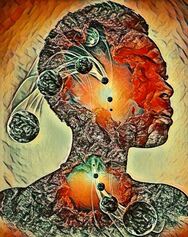
If very careful attention is given to the unique wording of Scripture, it becomes clear that man in his relation to the Creator is established of more than what is so often asserted: rather than a tripartite being, we consist of a five-fold tier of supernatural substance in our expression of His exalted image. Yes, there are five main hues to our humanity instead of the three of which we are usually taught to subsist. Understanding the clarity of this compound position in which we exist will illuminate better for us what it means for man to be made in the image of the Creator.
While the normal assertion is that we exist in our most base sense as a body, which itself possesses a soul and a spirit, the testimony of Scripture is that the soul is linked immediately to the body itself, so that the flesh of man is the “outermost” aspect of the soul. If this sounds strange, please consider the witness of the Word in the following passages:

“Yet, flesh with its soul—its life—you shall not eat.”
~ Genesis 9:4
~ Genesis 9:4

“For the soul of the flesh is in its blood, and I have given it to you upon the altar for atonement upon your souls: for it is the blood with its soul that atones.”
~ Leviticus 17:11
~ Leviticus 17:11

“For the soul of all flesh is its blood [that] is in its soul, and I said to the sons of Yisra’el: ‘Blood of any flesh you shall not eat, for [the] soul of all flesh is its blood.’ All who eat it shall be cut off.”
~ Leviticus 17:14
~ Leviticus 17:14

“Only, be strong to never eat the blood, for the blood is the soul, and you shall not eat the soul with the flesh.”
~ Deuteronomy 12:23
~ Deuteronomy 12:23
Through these passages we find the soul of mankind is connected intimately to the blood, which is in the flesh of a creature. Although many translations will render the Hebrew term NEFESH that is used in these passages as “life” instead of “soul,” the physical-spiritual notion of the term is clear from its first usage concerning mankind in Scripture, found in Genesis 2:7.

And YHWH Elohim formed the man [of] dust from the ground, and He breathed into his nostrils breath [of] life, and the man became a living soul.
Man becomes a living NEFESH “soul” only through the direct involvement of the Creator in a special creation. The various aquatic and land-dwelling creatures mentioned in Genesis 1:20, 1:21, 1:24, and 1:30, were souls generated through water and through earth, a detail that is not usually highlighted: water and earth brought forth souls! This factor is likely why Leviticus 17:15, 22:6, and Numbers 19:13, and 19:20 speak of a “soul” that has become unclean being restored to purity through immersion in water, and why Leviticus 17:13 commands that the blood of certain types of creatures (in which is their soul) must be poured upon the ground and then covered with dirt. The power of water and earth to receive and alter the state of a soul appears due to their original generative role in the realm of the soul. Man’s relationship to these lay in the fact that he was made from earth, which itself arose in the creation act from water (see: Genesis 1:9).
What is different is that mankind alone—although formed of the earth—did not become a “soul” until the Holy One performed a unique act: He breathed into Adam to make him different from the creatures which the Hebrew text, in the above-referenced verses, says became “souls.”
As can thus be seen, the base nature of mankind is not just a body, but a body that has a soul—an inherent link of physical-spiritual essence is what constitutes a person.
The second aspect in the spiritual makeup of mankind is the RUACH, usually translated as “spirit.” It is given from the Creator and returns to Him at our death, as King Solomon stated in Ecclesiastes 12:7.
As can thus be seen, the base nature of mankind is not just a body, but a body that has a soul—an inherent link of physical-spiritual essence is what constitutes a person.
The second aspect in the spiritual makeup of mankind is the RUACH, usually translated as “spirit.” It is given from the Creator and returns to Him at our death, as King Solomon stated in Ecclesiastes 12:7.
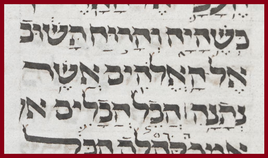
…and the spirit returns unto Elohim who gave it.
This aspect of our spiritual nature is uniquely from the Holy One, possessing an insight into things of a heavenly nature which the NEFESH “soul” cannot. A previous verse from Ecclesiastes 3:21 upholds this notion.
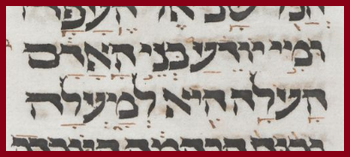
Who knows the spirit of the sons of man, who ascends on high?
The spirit we have been given has the ability to commune with the heavens in a way that our soul is unable to do. It can “ascend” to a higher spiritual dimension. It can possess that “feeling” of a greater, more in-depth interaction with the things of the Holy One. Whereas the NEFESH is linked to the physical realm, the RUACH is linked to the spiritual realm. Job 12:10 explains it in this simple way.

In whose hand is the soul of all living, and the spirit of all flesh of man.
The spirit of man is therefore seen to be loftier than the soul, yet still maintains a connection to the “flesh” of mankind.
The third aspect of man’s spiritual makeup is the NESHAMAH, or what the Hebrew refers to as the “breath” of man. We are now in territory not usually encountered in widespread discussion of man’s spiritual nature. The notion of NESHAMAH has to do with our intellect and understanding. Scripture speaks of it in Job 32:8 in this manner.
The third aspect of man’s spiritual makeup is the NESHAMAH, or what the Hebrew refers to as the “breath” of man. We are now in territory not usually encountered in widespread discussion of man’s spiritual nature. The notion of NESHAMAH has to do with our intellect and understanding. Scripture speaks of it in Job 32:8 in this manner.

But a spirit is in man, and the breath of the Almighty [gives] understanding.
On this higher spiritual dimension, above the RUACH “spirit” or mankind, lay his NESHAMAH—the “breath” that links to divine understanding of a matter. It is not human comprehension, but a knowing in the deepest realms of a person’s spiritual life, and through it we are able to link to Him in His reality of worth and value.
The Word further develops this idea when we read the term in its usage in Proverbs 20:27.

The “lamp of YHWH” is the breath of a man, searching all innermost chambers.
The NESHAMAH “breath” of man is where we truly understand a thing in its most comprehensible spiritual essence. That is why Psalm 150:6 refers to this NESHAMAH function regarding how we respond to the worthiness of the Holy One.

Every breath shall praise Yah: you must praise Yah!
It is our NESHAMAH that truly praises the Creator—while soul and spirit can be affected by deed and the subtle hues of feeling in any given experience, the NESHAMAH will truly express what is really going on in a person’s spiritual situation: is true worship actually occurring, or is it not? This happens on the NESHAMAH level of the nature of man.
The fourth aspect of man’s spiritual makeup is his CHAYAH “life.” It is here that man is attached to both existence as we know it and as we cannot know it—from the most mundane of reality to the loftiest spiritual reaches of the heavens. Psalm 66:8-9 address the notion of a person’s CHAYAH.
The fourth aspect of man’s spiritual makeup is his CHAYAH “life.” It is here that man is attached to both existence as we know it and as we cannot know it—from the most mundane of reality to the loftiest spiritual reaches of the heavens. Psalm 66:8-9 address the notion of a person’s CHAYAH.

8 You must bless our Elohim, O peoples, and you must make heard [the] voice of His praise,
9 Who sets our soul in life…
9 Who sets our soul in life…
What is being said here? We have a soul that is “set,” or “established,” in CHAYAH—“life.” This is not to be understood as the day to day events in a person’s lifespan but refers to the very reality of being alive in the first place: life itself! The Hebrew term used in verse 9 of HASAM “sets” literally means “to appoint,” / “to make,” and so we can appreciate that the soul of man is affixed in some kind of spiritual “setting” that Scripture itself calls CHAYAH—“life.” Therefore, CHAYAH is the root essence of the NEFESH “soul” of man. It is our connection to reality itself.
The fact that our CHAYAH is the source of our soul, which is the lowest aspect of who we are, must also mean that it encompasses our RUACH “spirit. This is exactly what we are told in Isaiah 38:16.
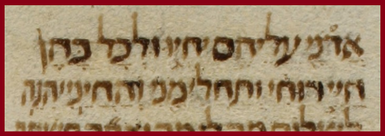
Master, concerning these they live, and in all these is the life of my spirit—and You shall heal me and cause me to live.
There is thus a CHAYAH for our RUACH—a “life” for a “spirit.” This shows the higher nature of the CHAYAH in regard to our spiritual composition. It also thus follows that if our CHAYAH is higher than our soul and our spirit, it is also loftier than our NESHAMAH “breath.” This is seen by returning to the text of Genesis 2:7 in the making of man.
There we read the statement: “and He breathed into his nostrils breath [of] life, and the man became a living soul.” The phrase “breath of life” is the NESHAMAH of CHAYAH. This tells us the NESHAMAH “breath” is “of CHAYAH.”
The fifth and final aspect of man’s makeup is the YECHIDAH “the only one.” Whereas man’s CHAYAH is what connects man to physical and spiritual realms, man’s YECHIDAH is the part that tethers us ultimately to the Creator Himself. It is man existing in his most intimate relationship with the Most High. The idea is that of the union between Creator and created.
There we read the statement: “and He breathed into his nostrils breath [of] life, and the man became a living soul.” The phrase “breath of life” is the NESHAMAH of CHAYAH. This tells us the NESHAMAH “breath” is “of CHAYAH.”
The fifth and final aspect of man’s makeup is the YECHIDAH “the only one.” Whereas man’s CHAYAH is what connects man to physical and spiritual realms, man’s YECHIDAH is the part that tethers us ultimately to the Creator Himself. It is man existing in his most intimate relationship with the Most High. The idea is that of the union between Creator and created.
Hebrew Scripture speaks of this most exalted nature of man’s spiritual makeup only twice, so it is a very mysterious subject, if we are being honest. King David first spoke of it in Psalm 22:20.

You must save my soul from the sword; from the hand of the dog my only one.
In his cry to the Holy One, King David made mention of his YECHIDAH. Many translations will render the term with something like “my darling,” or “my precious life,” or just “my life.” The term literally conveys the idea of a singularity of a thing—its truest, inner core. In this perspective we can appreciate better what King David was lamenting: he was seeking rescue that would reach the uttermost intimate reaches of his existence!
The second time YECHIDAH is encountered concerning man is in Psalm 35:17, in a similar expression.
The second time YECHIDAH is encountered concerning man is in Psalm 35:17, in a similar expression.

Master—for how can You look upon me? You must return my soul from their devastations; from the young lions my only one!
We can see in this outcry essentially the same plea for a salvation the scope of which would touch his fundamental essence. The YECHIDAH is thus man in the reality of the Creator—man linked to the ultimate Source of all things.
These five aspects of the spiritual makeup of man show us the tiered nature of our existence. Made from the stuff of heavens and the stuff of earth, our presence reflects that reality by essentially reaching from heaven to earth in the five terms the Hebrew Scriptures use to speak about man’s spiritual characteristics.
These five aspects of the spiritual makeup of man show us the tiered nature of our existence. Made from the stuff of heavens and the stuff of earth, our presence reflects that reality by essentially reaching from heaven to earth in the five terms the Hebrew Scriptures use to speak about man’s spiritual characteristics.
The reason for this fivefold makeup of man lay in the fact that we are made in the image of the Creator, and the Word speaks of His nature in a similar fivefold manner. While it may seem surprising, the text of Scripture makes mention of these same five spiritual subtleties of man as being ultimately facets of the Holy One Himself!
We can begin to see this truth in that the Torah itself tells us the Creator has a NEFESH “soul” in Leviticus 26:11.
We can begin to see this truth in that the Torah itself tells us the Creator has a NEFESH “soul” in Leviticus 26:11.

And I shall place My Tabernacle in your midst, and My soul shall not reject you.
As odd as it is to think of the Creator of all things as having a soul, the Word clearly expresses this notion here, as well as in several other passages—most notably in the book of Jeremiah. What that means is different for Him than it is for us. While it conveys our inherent link to the physical in regard to mankind, for the Holy One to be said to possess a soul is a far grander sentiment.
Isaiah 55:3 explains it well.
Isaiah 55:3 explains it well.
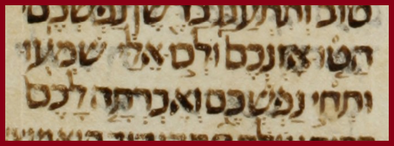
You must incline your ear, and come to Me: you must hear, and I shall [make] your souls alive…
The Holy One possessing a soul is to say that He is the fount from which all the souls of the living exist, and through Him the link to reality from its highest to its lowest is vivified. He alone has the power to make living souls because Him possessing a soul means He is the origin of all souls. By linking this to the previous verse concerning Him setting His tabernacle among us, we can see that the admission of a soul being part of His spiritual makeup means He seeks to be with us even in the most base level of reality—the existence of this dimension that is scarred even with the marks of our rebellion. Still He seeks to reach us here, in order to lift us up from the mire of sin through true worship, to remind us that we are made in His image!
In connection with the Creator having a soul, the Hebrew Scripture also tells us that the Creator possesses a RUACH “spirit.” This is mentioned in Isaiah 42:1 when speaking of the Messianic figure that was to come.
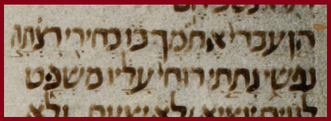
See My servant whom I uphold; unto him is the desire of My soul. I shall place My Spirit upon him…
Here the concept of the Creator’s soul and Spirit is linked and is said to be directed toward the Messiah. While other passages speak of His RUACH and what it accomplishes, This single verse perhaps best shows us the functionality of the Holy One’s soul and spirit is to empower mankind with the divine strength to operate in the expression of His will. By His soul and strength, mankind is enabled to live as He desires us to live. This is all wrapped up in being made in His image.
Just as the Creator’s NEFESH “soul” is spoken of in relation to His RUACH “spirit,” so too is His RUACH elsewhere discussed in its link to His NESHAMAH “breath.” Both terms being encountered in Job 33:4.

The Spirit of El made me, and the breath of the Almighty vivifies me.
The Creator thus possesses a RUACH and a NESHAMAH. It is by virtue of His own NESHAMAH that mankind can also be linked to Him in a profound spiritual manner. We exist in His image by touching all these aspects in our own nature—we are truly kindred spirits, so to speak!
The ancient Jewish text of the Zohar attempts to clarify this notion of the Creator’s NESHAMAH by referring to His exalted nature via a title.
The ancient Jewish text of the Zohar attempts to clarify this notion of the Creator’s NESHAMAH by referring to His exalted nature via a title.
Referring to the Creator as NISHMATA D’KAL NISHMATIN “The Breath of all breaths” is a way to say that He is the Source from which comes all the spiritual aspects of man.
Just as man possesses each of these spiritual tiers—and more—so too do we see the next supernal level of CHAYAH linked also to the Creator. It comes in a statement that is found all over the Hebrew Scriptures, but can be translated differently depending on how the translator approaches the text. An example of such is in Numbers 14:21.
Just as man possesses each of these spiritual tiers—and more—so too do we see the next supernal level of CHAYAH linked also to the Creator. It comes in a statement that is found all over the Hebrew Scriptures, but can be translated differently depending on how the translator approaches the text. An example of such is in Numbers 14:21.

And nevertheless, I am life, and the glory of YHWH shall fill the entire earth!
The Hebrew phrase here is CHAI ANI, and most often appears with the rendering of “as I live…” However, the literal reading can just as easily be read as “I am life…” With this alternate reading it becomes clear that the Creator is truly the Source of life itself.
Psalm 36:9 asserts this notion.

For with You is the fountain of life.
All who live do so through Him. The most exalted part of man is his CHAYAH—that spiritual aspect which tethers us to reality as it can be known. This link to existence wells up from the fact that the Holy One Himself is CHAYAH “Life,” and so man is made in His image with that same spiritual nature.
The aspect of man’s spiritual nature that refers to its most supreme connection to the Creator is his YECHIDAH, and we find that this term is used once also in the context of the Most High. Zechariah 12:10 holds that single reference.
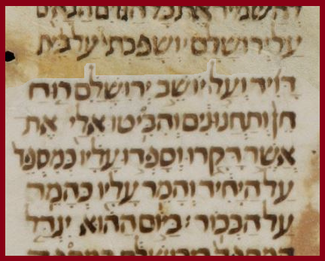
And I shall pour over the House of David, and over the inhabitants of Yerushalaim, a spirit of grace and favor. And they shall look upon Me—those who pierced. And they shall mourn over Him as is mourning over an only one. And they shall be bitter over Him as the bitterness over the firstborn.
This is a highly Messianic passage, and the wording here shows the depth of the reaction man will display when the Creator’s desire to be restored is finally realized in the feeble minds of mankind. He will lavish upon us unmerited grace and favor, and in that moment His people shall see how far the Holy One has gone to be reunited in total harmony with those originally made in His image: He was pierced to the core—to the YECHIDAH—as it were, in His willingness to have that sin-scarred image finally be restored in perfect alignment with Him. Mankind will at last see just how far-reaching our sins have been, and yet perhaps even more, how far-reaching the Creator’s compassions have been to us. As it were His YECHIDAH pierced, He yet sought out His rebellious image-bearers, and in that pursuit of us, He made the way to still pour out a spirit of seemingly infinite mercy.
The Creator’s YECHIDAH demands unity / singularity with His creation, and when man at last mourns what his sins have cost to obtain that, we will finally be in union once more: what was once made and then so horribly marred will forever be returned to its original purpose. When we understand truth of the rich depth of our being in light of His own, we can better appreciate what it means to be made in the image of the Holy One.
All study contents Copyright Jeremy Chance Springfield, except for graphics and images, which are Copyright their respective creators.


